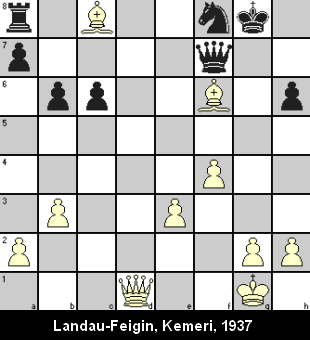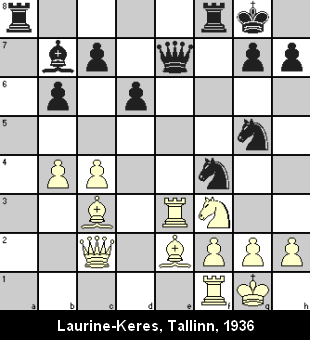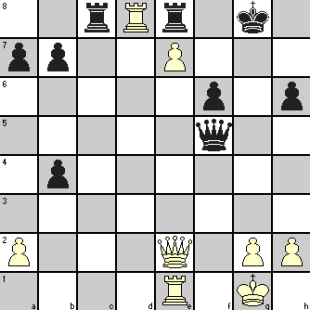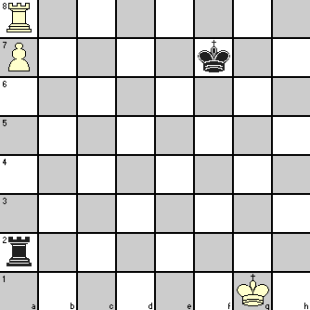All of us appreciate beautiful chess combinations that occur at all levels – from games between amateurs to those between top grandmasters. A combination is nothing but two or more tactical moves in a sequence that create an advantage for the player who has thought it up. If you examine any such combination, you will find certain elements of tactics have been strung together. At every stage of the game, you should be aware of these tactical possibilities and how these can enable you to get an upper hand on your opponent.
‘Cooking’ up a combination is literally similar to the art of cooking! No matter how esoteric a dish is, its preparation will involve a few of the standard processes of cooking like frying, boiling, steaming, roasting and so on. In the same way, even the deepest chess combination comes out of some standard chess tactics. If you know these techniques, it is up to your imagination to combine some of these to create a memorable combination!
You will notice that at the heart of all chess tactics, there lies some kind of threat or the avoidance of threat. The tactics may threaten the gain of material or a checkmate of the opponent’s KIng, immediately or soon after the move. Your opponent will of course try to counter these threats, but in the process gets forced to create weaknesses in his position which can be exploited by further tactical moves. The build-up of the weaknesses ultimately results in his capitulation.
Though these chess tactics can find use at any stage of the game, they come most useful during the middle game – either for outright win or for steering it towards a winning end game. We will now examine these elements of tactics and see how these are used in games.
1. Check
A check holds importance because the opponent has to attend to it before all else. But check for check’s sake does not achieve anything. Rather, if your opponent can develop his pieces or pawns while refuting the check, it gains him a valuable tempo. Check as a tactics is beneficial when it forces your opponent either to make moves that give him an inferior position or to divert him from his own plans.
In the following position after 25 moves, check is used to force the opponent to defend in a way that exposes him to further tactics threatening the loss of a piece.
| 26. | Qg4+ | Kh7 | 26. … Qg6 does not help as 27. Be6+ will make Black lose his Queen whether he plays 27. … Nxe6 losing support for his Queen or 27. … Kh7 when White replies with 28. Bf5 | ||
| 27. | Bd4 | Qg8 | |||
| 28. | Bf5+ | Ng6 | |||
| 29. | h4 | c5 | |||
| 30. | Be5 | Resigns | Black’s Knight is pinned and will fall when White’s RP advances one more step |
Following position after White’s move 20. Re3 shows how Black used checks as a tactics to corner the White King.
| 20. | … | Nxe2+ | |||
| 21. | Qxe2 | Nxf3+ | If 21. Rxe2, then 21. … Nxf3+ 22. gxf3 Qg5+ 23. Kh1 Bxf3# |
||
| 22. | gxf3 | Qg5+ | If 22. Qxf3, then Black wins a piece by 22. … Rxf3 23. Rxe7 Rxc3 |
||
| 23. | Kh1 | Rxf3 | Black now threatens a discovered check on next move |
||
| 24. | Rxf3 | Qg4 | Black creates a two-way pin on the Rook at f3 and White has no way out of it. He resigned as 25. … Bxf3 forces loss of Queen or checkmate. |
In above two examples, you will notice that other tactical elements like discovered check and pin have been used to exploit the initial check. These and other elements of chess tactics will be discussed later.
Another use of check is to erode the support of one piece for another, making for quick gain of material. In the next position, White plans to exploit Black’s back rank (another tactical element to be explained later) but needs to remove the defensive support of Black’s Rook at c8. He does it by using the power of check.
| 1. | Qc4+ | Rxc4 | If Black refuses the offer and plays 1. … Kg7 then 2. Qxc8 Qxc8 3. Rxc8 Rxc8 4. e8=Q Rxe8 5. Rxe8 wins for White | ||
| 2. | Rxe8+ | Kg7 | |||
| 3. | Rg8+ | Resigns | Black cannot stop the queening of the pawn with mate to follow |
Sometimes, even the threat of a check is enough to win material as shown in the following typical endgame situation which you must take note of.
The only winning move for White is 1. Rh8. If 1. … Rxa7, then 2. Rh7+ or if 1. … Kg7, then 2. a8=Q Rxa8 3. Rxa8. In either case, White wins the Black Rook.
We will continue the discussion of the other tactics in the next part.






7 Comments
Beginners tend to get mate due to back rank. It is one of those things that one must always take care of. Great guide btw, thanks.
The endgame position with the Rooks is a very common one and important to know. It comes up all the time. I had a very similar position arise in one of my recent games. Good to know this tactic! Thanks for the great article.
[...] the first part of this series, you saw the tactical use of checks. We now take up a type of special check known as [...]
[...] 12 chess tactics and how to use those to gain advantage – Part 1 All of us appreciate beautiful chess combinations that occur at… [...]
[...] have already discussed different forms of check that constitute a part of a chess player’s attacking arsenal. We now proceed to discuss the [...]
[...] our ten-part article series on chess tactics (starting with 12 chess tactics … – Part 1), we have discussed the different tactics that go into different combinations. You have seen [...]
i often play without making check at early games